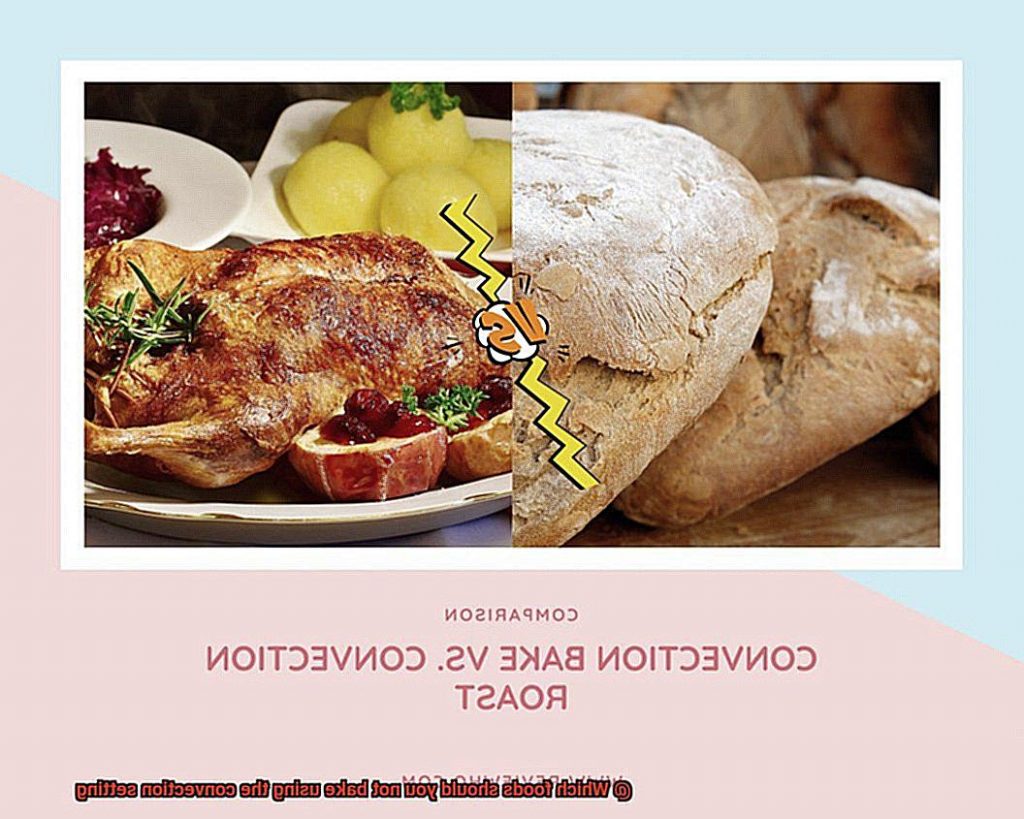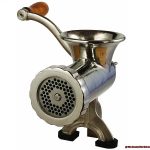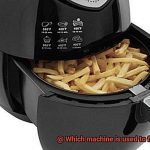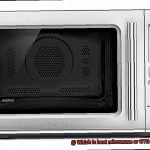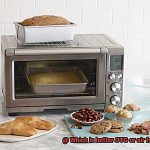Are you a food lover who enjoys experimenting with new cooking methods? If so, you’ve likely heard of convection baking. This innovative technique uses a fan to circulate hot air inside an oven, resulting in faster and more even cooking. But before you start using this method for all your recipes, it’s important to know that not all foods are created equal when it comes to convection baking.
You might be thinking, “What’s the big deal? It’s just hot air, right?” Well, not quite. Depending on what you’re baking, the fan can actually have a negative impact on the texture and flavor of your dish. That’s why it’s crucial to understand which foods should not be baked using the convection setting.
In this post, we’ll take a deep dive into the world of baking and explore the nuances of convection baking. We’ll cover everything from delicate pastries to certain types of meats that won’t fare well with this cooking method. Plus, we’ll give you essential tips to help you get the most out of your convection oven and elevate your cooking skills to the next level.
So if you’re ready to become a convection baking pro and avoid any culinary mishaps along the way, grab a cup of coffee and let’s begin.
Contents
What is Convection Setting?
It’s a special function available on some ovens that uses a fan to circulate hot air, resulting in faster and more even cooking. But while it’s a popular option for many home cooks, not all foods are suitable for cooking with the convection setting.
The basic principle behind convection cooking is that hot air rises, and as it does so, it carries away moisture from the food being cooked. This helps to create a crispy exterior on the food while keeping the inside moist and tender. Convection ovens also tend to cook food faster than traditional ovens, which can save time in the kitchen.
However, some delicate baked goods such as soufflés or meringues should not be baked using the convection setting. These types of baked goods rely on rising and setting slowly, and the high-speed air circulation of the convection setting can cause them to collapse. Similarly, casseroles or braised dishes that need to be covered or kept moist should also be avoided. The hot air circulation can cause the moisture to evaporate quickly, leaving you with a dry and unappetizing dish.
Baked goods that have a lot of sugar or fat in them such as cakes or pastries can also be negatively affected by the convection setting. The high-speed air circulation can cause the sugar to caramelize too quickly and create a hard crust on the outside while the inside remains undercooked.
So, what foods are best suited for cooking with the convection setting? Here are some examples:
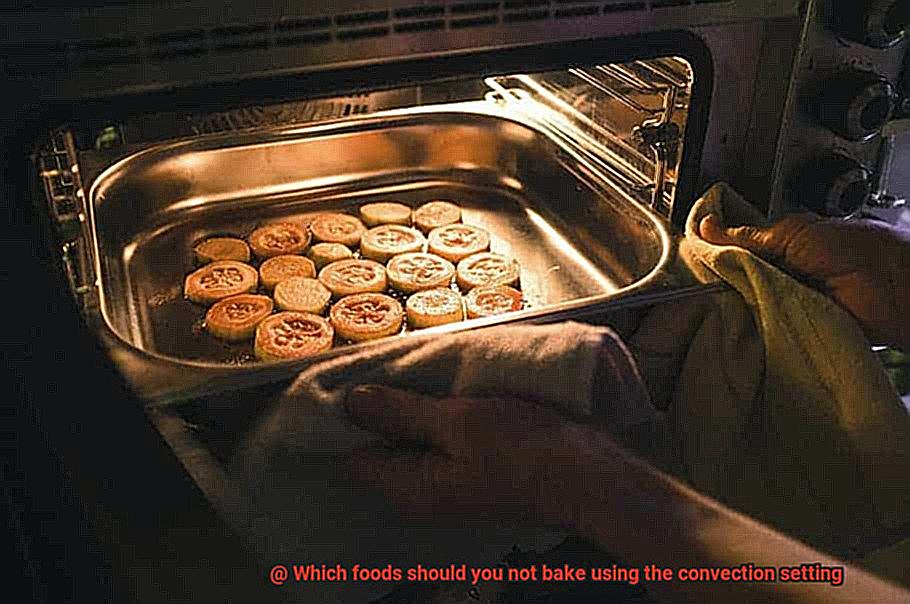
- Roasted meats and vegetables: The convection setting is perfect for creating a crispy exterior on meats and vegetables while keeping them moist on the inside.
- Breads: The hot air circulation helps to create a crusty exterior while keeping the inside soft and fluffy.
- Pizza: The convection setting helps to create a crispy crust while evenly cooking the toppings.
Why Should You Not Use Convection Setting for Certain Foods?
Imagine you’re preparing for a fancy dinner party, and you want to save time by using the convection setting on your oven. You put in your delicate cake, hoping for the best, only to find that it’s collapsed and uneven. What went wrong? This is a prime example of why you should not use the convection setting for certain foods.
While convection ovens are a game-changer with their high-speed fans and even cooking capabilities, they aren’t always the best choice for every dish. As an expert in this topic, I can tell you that there are certain foods that are better off being cooked using traditional methods of baking or roasting.
First and foremost, delicate baked goods like cakes and pastries should never be baked using the convection setting. The high-speed fan can cause these items to rise and fall too quickly, resulting in an uneven texture or even a collapsed cake. Nobody wants that. So, if you want a cake that rises beautifully with an even texture, stick to the regular bake mode.
Another type of food that should avoid the convection setting is dishes requiring a moist environment. Custards and puddings are prime examples of this. The constant air circulation from the fan can cause these items to evaporate too quickly, resulting in a rubbery texture. For these dishes, it’s best to use a lower temperature and longer cooking time with no fan.
It’s also essential to note that foods that are covered or wrapped, such as casseroles or foil-wrapped meats, should not be cooked using the convection setting. The fan can disrupt the protective layer, causing steam to escape, resulting in a dry and tough end product. So if you want juicy and tender meat or a perfectly cooked casserole with no dryness, use regular bake mode.
Delicate Baked Goods
If so, you may have already tried using a convection oven to bake your favorite treats. While convection setting can be a fantastic tool for preparing many foods, it is not ideal for delicate baked goods.
As an expert in this field, I can tell you that delicate baked goods require a gentle and consistent heat source to develop their signature soft and tender texture. Unfortunately, the high-powered fan of a convection oven can create too much airflow, causing these treats to deflate or become tough. So, it’s best to avoid using the convection setting when baking delicate items.
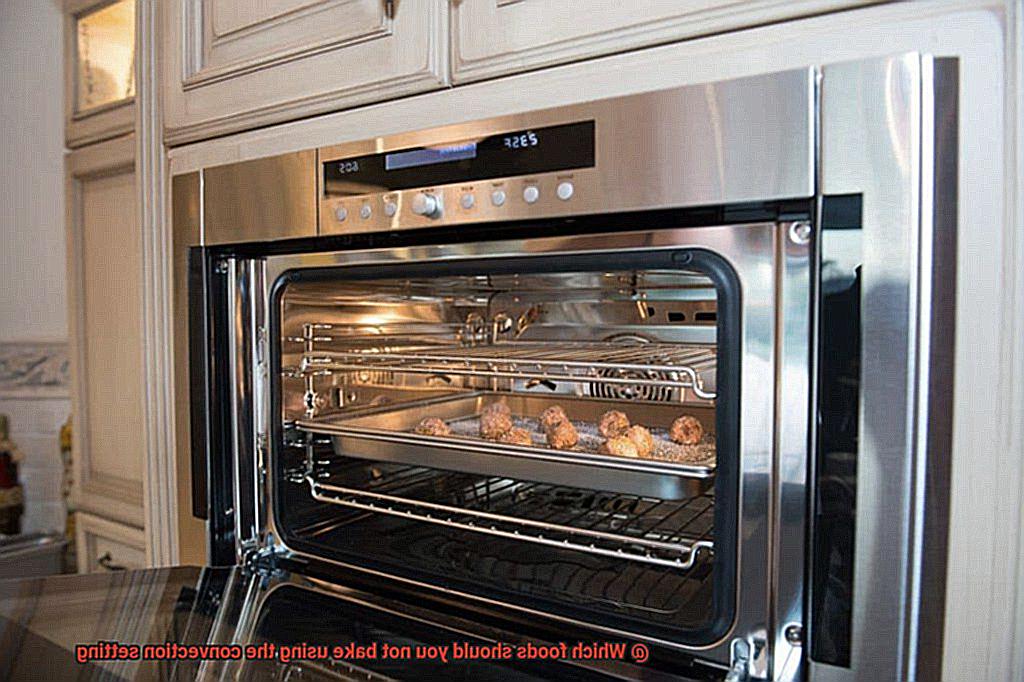
One example of a delicate baked good that requires special attention is soufflés. These feather-light dishes rely on steam to create their signature puffiness. The high airflow produced by the convection setting can quickly evaporate the moisture and cause the soufflé to collapse. Similarly, custards and puddings also depend on a moist environment and slow, gentle heat to set correctly; the hot air generated by the convection setting can cause these desserts to turn rubbery or refuse to set properly.
Cheesecakes are another example of a delicate dessert that should not be baked using convection. The high airflow can cause the cheesecake to crack or dry out on the surface, ruining its creamy texture.
In general, any baked goods that rely on moisture or need a gentle and consistent heat source should not be baked using the convection setting. Examples include meringues, angel food cakes, and delicate pastries like croissants.
It’s important to note that some recipes may call for using convection for delicate baked goods. In those cases, it’s best to follow the recipe instructions carefully. However, if you’re unsure, it’s better to err on the side of caution and use a regular bake setting instead.
Covered Dishes
The convection setting relies on circulating hot air throughout the oven, which can cause moisture to become trapped inside the dish. This can lead to dishes becoming too moist and soggy.
So, what are some examples of covered dishes that may not work well with the convection setting? Dishes that have a lot of liquid in them, such as casseroles, pot pies, and stews, should be avoided. The convection setting can cause the liquid to boil and bubble over, creating a mess in your oven.
However, there are some exceptions to this rule. If you’re baking a covered dish with a crust, like a pot pie or quiche, it may be okay to use the convection setting during the first part of the cooking process. This ensures that the crust gets crispy before switching back to regular baking mode to finish cooking the dish.
When deciding whether or not to use the convection setting for your covered dish, it’s best to use your own judgment. If you’re unsure, consult your oven manual or do some research online to see if others have had success with similar recipes.
Foods with High Amounts of Sugar or Fat
Baking is an art that requires precision and attention to detail. Whether you’re a professional baker or just a passionate home cook, you know that the perfect texture, flavor, and appearance of your baked goods can make or break a dish. And when it comes to baking foods with high amounts of sugar or fat, using the convection setting can be a bit of a challenge.
The convection oven has gained popularity in recent years for its fast and even cooking process, thanks to the circulation of hot air. However, some foods don’t fare well with this setting, especially delicate pastries. Soufflés, custards, and flans require a gentle and even heat to rise properly and set without cracking. The high heat and circulating air of the convection setting can cause these delicate desserts to collapse or become overcooked. So, if you want to enjoy a perfectly risen soufflé or creamy custard, stick to the regular baking mode.
Similarly, baked goods with high sugar content such as meringues, macarons, and pavlovas require a slow and steady baking process to achieve a crisp and light texture. The high heat and circulating air of the convection setting can cause the sugar to melt too quickly, resulting in a sticky and chewy texture instead of a crispy one. To indulge in some sweet meringues or airy macarons, avoid using the convection setting.
Dishes with high amounts of fat such as pies, quiches, and cakes rely on butter or shortening for their rich flavor and tender texture. However, using the convection setting can cause the fat to melt more quickly than desired, resulting in a greasy and soggy crust or cake. To enjoy a perfectly flaky pie crust or moist and tender cake, it’s best to avoid using the convection setting.
Tips to Get the Perfect Bake Every Time
Baking is an art that requires precision and attention to detail. Getting the perfect bake every time can be challenging, but with some tips and tricks, you can achieve consistent results that will make your baked goods turn out perfectly every time.
Choose the Right Oven Setting
Using the correct oven setting is crucial when it comes to baking. While convection ovens are known for their ability to evenly distribute heat and speed up cooking time, they may not be suitable for all baked goods. Delicate items such as cakes, custards, soufflés, and other yeast-based doughs may not turn out well in a convection oven. On the other hand, the convection setting is ideal for roasting meats and vegetables or making crispy cookies and pastries.
Know Which Foods to Avoid Baking with Convection
It’s important to know which foods are best suited for the convection setting and which ones are not. As mentioned earlier, delicate items like soufflés or flans should not be baked using convection as the high-speed air flow can cause them to deflate or cook unevenly. Similarly, cakes with a light and airy texture may not rise properly if baked on convection, resulting in a dense and heavy cake.
Adjust Cooking Time and Temperature
If you do decide to use the convection setting, it’s crucial to adjust both the cooking time and temperature accordingly. As convection ovens cook food faster than traditional ovens, reducing both by about 25% can prevent overcooking or burning.
Preheat Your Oven Properly
Preheating your oven properly is essential for consistent baking results. This ensures that the temperature is consistent throughout the cooking process and helps your baked goods turn out perfectly every time.
Measure Ingredients Accurately
Accurate measurement of ingredients is crucial when it comes to baking. Even small discrepancies in measurements can lead to big differences in the final product. Use a kitchen scale or measuring cups and spoons to make sure you’re adding the right amount of each ingredient.
Use High-Quality Baking Tools
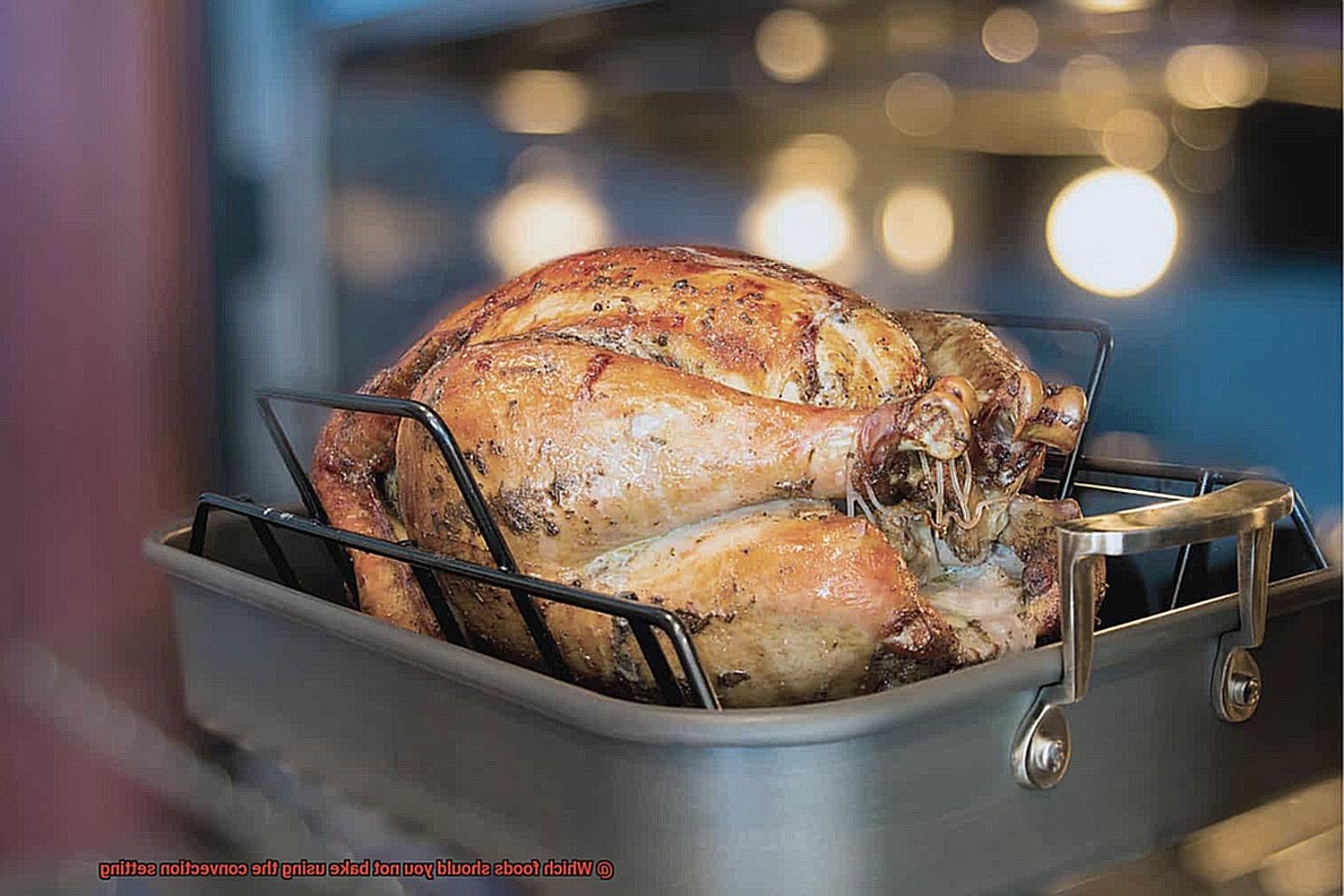
Investing in high-quality baking tools can make a big difference in the outcome of your baked goods. Good-quality baking pans, measuring cups and spoons, and a reliable oven thermometer are essential for consistent results every time.
Common Mistakes to Avoid When Using a Convection Setting
Many people make common mistakes when using a convection setting that can lead to disastrous results. But fear not, as an expert in this field, I am here to guide you through the most common mistakes to avoid when using a convection setting.
First and foremost, adjusting the cooking time is crucial when using a convection oven. The hot air circulating in the oven means that your food will cook faster and more evenly than in a traditional oven. Failing to adjust your cooking time accordingly can result in overcooked or burnt food. So, keep a close eye on your dish and adjust the cooking time as needed.
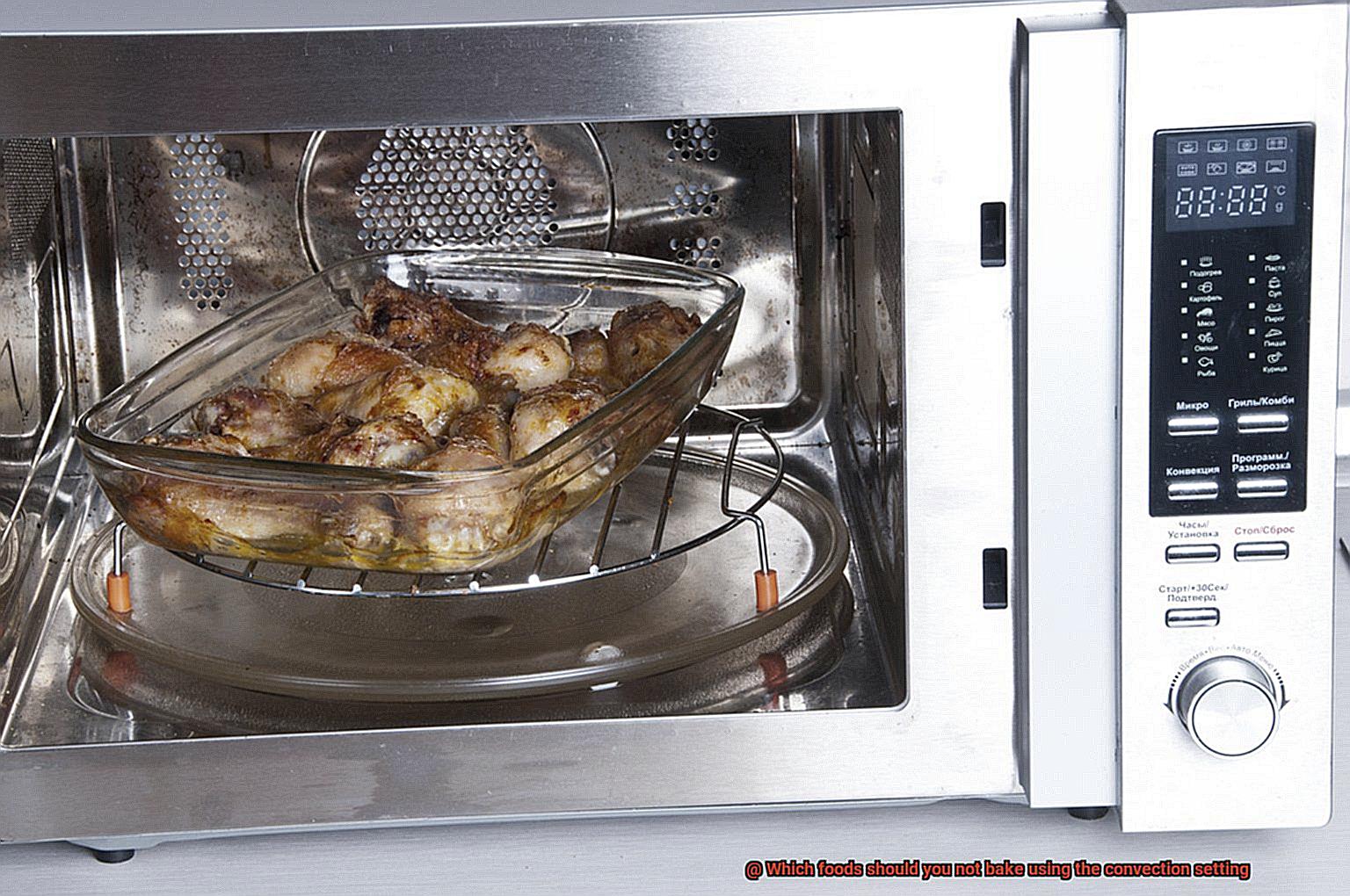
Additionally, using the wrong cookware can be detrimental to your dish. Convection ovens require cookware that allows air to circulate around the food. If you use deep pans or dishes with high sides, they can block airflow and prevent your food from cooking evenly. Instead, opt for shallow pans and baking sheets that allow hot air to circulate freely.
Overcrowding the oven is also a big no-no when using a convection setting. It’s tempting to throw everything into the oven at once, but overcrowding prevents hot air from circulating properly, leading to unevenly cooked dishes. This can also cause your food to take longer to cook, resulting in dry and overcooked dishes. So, give your food some space to breathe and avoid overcrowding your oven.
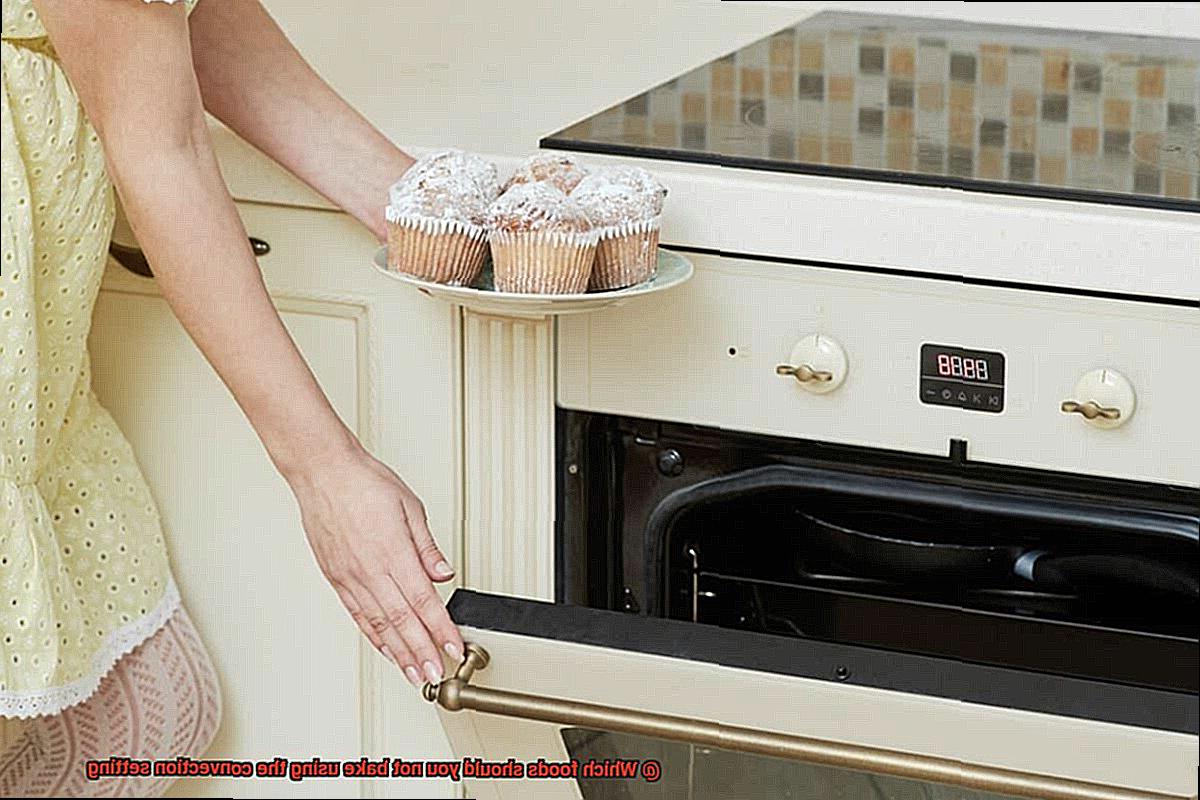
Lastly, preheating the oven is crucial when using a convection setting. This ensures that your oven is at the correct temperature before you start cooking, preventing undercooked or overcooked food. Without preheating, your dish may not cook evenly or may take longer than expected.
nqMaFTpDX4w” >
Conclusion
In conclusion, convection baking is a game-changer in the kitchen. With its high-speed airflow and even heat distribution, it can help you achieve perfect bakes in no time. However, not all foods are created equal when it comes to this cooking method.
Delicate baked goods like soufflés or meringues require a gentle touch and should be avoided with the convection setting. The powerful fan can cause these fragile treats to collapse, leaving you with a sad and deflated dessert. Similarly, casseroles and braised dishes that need to be covered or kept moist won’t fare well with convection baking either.
On the flip side, roasted meats and vegetables, breads, and pizza are prime examples of foods that thrive under the convection setting. But beware – baked goods with high amounts of sugar or fat may not turn out as expected.
To ensure success with convection baking, there are some key tips to keep in mind. Adjusting cooking time and temperature based on your recipe’s needs is crucial for perfectly cooked food every time. Preheating your oven properly is also essential for consistent results.
Another common mistake to avoid is using the wrong cookware or overcrowding your oven. Don’t let your dishes compete for space – give them room to breathe. And last but not least, measuring ingredients accurately and using high-quality baking tools will make all the difference.
By understanding which foods work best with convection baking and following these tips and tricks, you’ll become a pro in no time.

